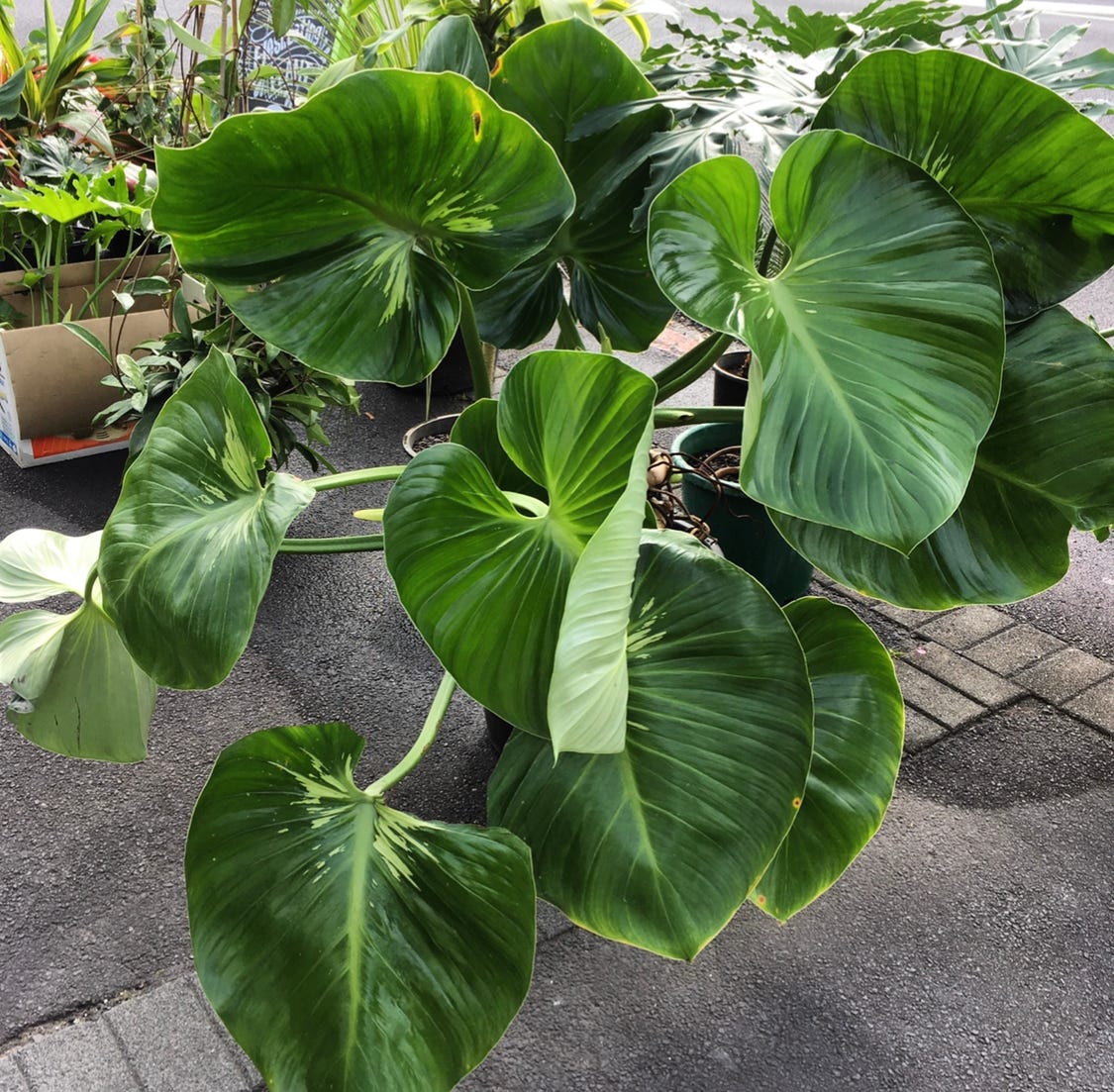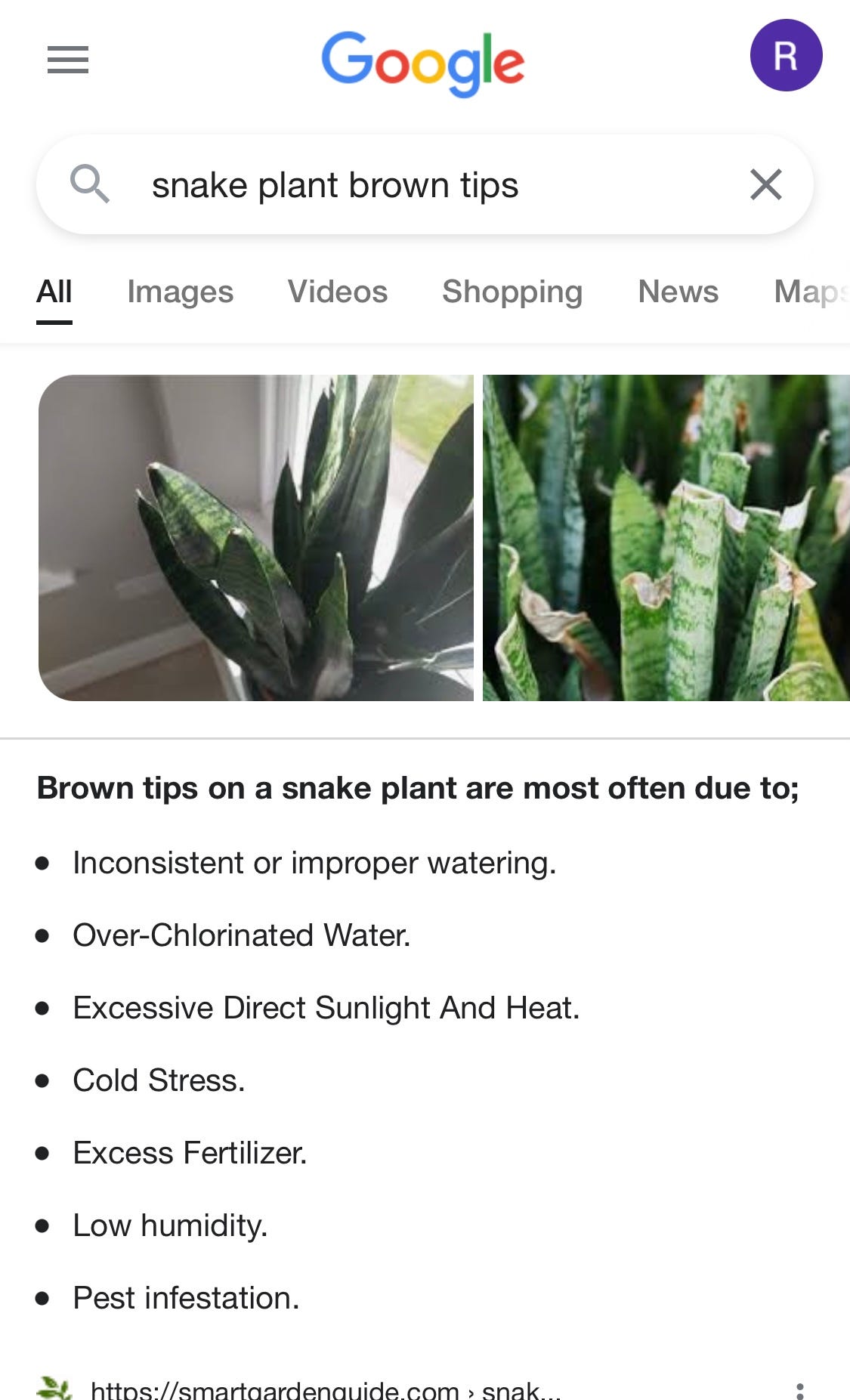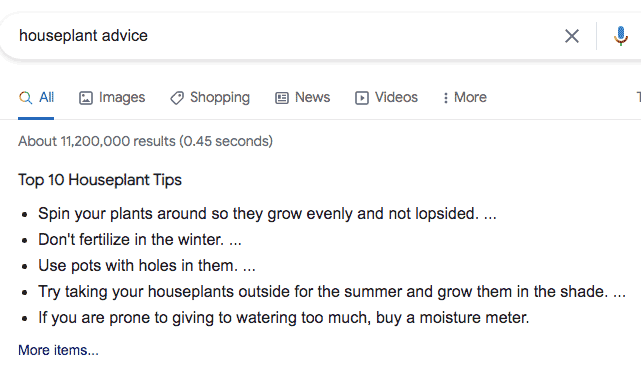A Plant Black Hole
Where do all the houseplants go? In the years I’ve been collecting, caring for, buying, and selling houseplants, I’ve always been struck at how there’s so many — small, retail size plants — yet so few — large specimen plants. If one didn’t know better, they’d be convinced that all the smaller plants remained the same size and never actually grew. In fact, if all the millions and millions of houseplants bought in the last ten or twenty years had kept on growing — as whole plants or even as cuttings — imagine what a volume of stunning specimens we would find in existence today. But we don’t. If you look wherever it is people sell their ‘used’ plants online (where you live), have a nosy. See what’s on offer. I think you’ll come to the same conclusion: where do all the houseplants go?
This is the dark side of the houseplant world, for there is no other explanation for where they all go than to conclude it’s in the bin. It hurts to say it, but what else can we conclude? The vast majority of houseplants don’t survive more than several months or a year. And those that survive longer, are probably stunted for life by a hesitancy to repot them. I’d love to see a survey that contradicted this conclusion, and see what the actual numbers are, but I’m not optimistic. From my own experience, as someone who’s always on the hunt for a plant with a bit of maturity, such occasions are few and far between. A similar view was offered by Hessayon, author of The House Plant Expert, years ago when he wrote: ‘The charm of houseplants may be universal, but many millions are allowed to die needlessly each year.’
The question, then, is why? Well, I think the title of this post gives you part of the answer. Even if you’re wanting to do your best to care for your plants, the help you’ll find online and in books is often incomplete, misleading, or downright wrong. One bit of ‘expert advice’ I read today was such and such plants need ‘moderate watering.’ What does ‘moderate’ mean, and don’t all plants need thorough watering when they’re needing to be watered? Such vagaries leave too much to chance. I have offered other examples in a previous post, so I won’t belabour the point. The goal here is not to correct this bad advice anyway. Rather, I want to consider the bigger picture. It’s not about which advice is bad, but why the advice is so bad to begin with.
Expert Advice
Let’s admit it, the main reason why houseplant advice is often bad is because it’s so superficial. The quantity is there, in abundance, but the quality is not. We want to believe that plants are simple and so plant advice should be simple too. We want plants in our home but don’t want any baby headaches that go along with them. There is often a mismatch, in other words, between what we need to know about plants, and what we want to know. There’s a lot a complicated solutions to this, but only one simple one: get artificial plants.
If you don’t want fake plants, and you don’t want ugly or dead plants, then you need to roll up your sleeves — at least a little. Having a plant is not the same thing as having a paperweight (although they can quickly become one). You don’t have to be a botanist, but you have to accept that, if you put a plant in a house, you own it. It’s not going to take care of itself.
In caring for plants of any kind, anywhere, we must look beyond the myriad articles offering ‘easy tips,’ and dig deeper. It’s not that all these tips are wrong, it just that it’s hard to know which ones to trust.
The Internet is full of houseplant experts (myself included 😊). The issue is that few of those who give advice really have the experience and know-how to be giving it. Back in the time when Hessayon was writing, 30 years ago, the problem was a paucity of advice. Today we’ve gone to the other extreme. With Facebook, Instagram, Reddit, et cetera, everyone who wants to pass on what they’ve learned has a ready-made platform for doing it. The houseplant discussion group on Reddit has almost a million members. Of course most of this advice is well meaning, and in some cases people really do have a lot of know-how. The trick for anyone looking for advice is to know the best way to ask for it, and interpret it.
Here’s a question someone might post online: ‘I have a sansevieria (snake plant), and the tips are always brown, what am I doing wrong?’ Here’s an answer, ‘You’re either overwatering or under-watering it.’ Well, this is not helpful because that hardly narrows it down, although it does focus your attention on watering. And you’re partly to blame because if you’re not willing to put much effort into your question, don’t except others to put much into their answer. Here’s a better answer: ‘You’re probably over-watering it because these plants can be really dry and they’re easy to over-water.’ To get an even better answer, ask a better question: ‘I water my sansevieria (snake plant) about once a week, and it’s not in direct sun. I’ve had it for six months and it was nice when I got it. But now the tips are brown, what am I doing wrong?’ By giving more detail, you’re likely to elicit a more precise answer, like: ‘Sounds to me like you’re overwatering it because in the shade it’s slow to dry out. The roots of these plants will rot when sitting in wet soil, or have water poured into the centre (vase) of the plant.’
Finally, here’s the ideal question: ‘I thoroughly water my sansevieria (snake plant) about once a week; it’s not in direct sun. I’ve had it for six months and it was nice when I bought it. But now the tips are always brown. Has anyone ever had this problem and learned how to fix it?’ The best question is one that requires the person answering to have qualifications. Even if they don’t, and they reply, they will probably make it clear for you that they lack the experience: ‘I’ve never had this problem, but you might be…’ Remember GIGO: garbage in, garbage out. Ask for a thoughtful answer to a well-asked question to get the best advice.
The thing to remember about advice is that people usually offer it based on positive experience: I do this and it works. But this is incomplete in many cases because it leaves out all the other options that may or may not work better. If I drive half the speed limit and claim I’ve never received a speeding ticket, that’s hardly good info. What we need is negative experience: I drove 5-10% over the speed limit, never had a ticket, but when I went over 10%, I had two tickets in two years. Now we’re narrowing things down to the optimal conditions.
A plant example of this is the common advice of putting your cuttings in water first, to get roots, before putting them in soil. Sounds logical, which might account for how adamant people are about doing this. If you actually asked a professional grower about this method, however, they would frown and say they have no idea. And they don’t because professional houseplant growers don’t use water in any stage of growing cuttings, other than to water the plants. This illustrates the problem with advice from only positive experience: while some advice givers might have positive experience with doing water-cuttings, do they really have negative experiences from doing it the way the professionals do? Using an intermediate step is often just a prejudice, in other words, based less on real experience and more on rule following.
Reasons, not Rules
How long is a piece of string? This is the most common question I receive when selling houseplants. Except with plants, the question goes like this: how often should I water this plant? The answer of course is, I don’t know!
People ask for rules: tell me how often to water this pot plant and I’ll do as you suggest. Unfortunately, it’s not that simple. Many variables affect how quickly a plant dries out, so a simple question immediately becomes a more complicated one. If all houses were the same temperature with the same humidity, it might make sense, but they’re not. Then consider that I would have no idea how a person might go about watering their plant: they might give it a real soak, they might just pour some water onto the surface of the soil, or, God forbid, they might just spray the foliage and that’s it. Somebody showed me the other day one of those phone-apps that identifies plants. It did just that too, with a lipstick plant, then it suggested watering this species one or two times per week. Oh dear. That was about as bad of advice as I could think of, almost designed to kill the plant.
The point I want to make is that, in caring for plants of any kind, anywhere, we shouldn’t look for one-size-fits-all advice. Instead, seek answers based on how plants actually work. The question of ‘how often should I?’ shows a very different approach. It says, let’s keep this simple, give me a schedule and I’ll follow it. Often it also means, I can’t be bothered to know more than that; if it can’t be that simple, I don’t want the plant. (Incidentally, this is why I say just water your plants when they’re clearly getting dry, because at least that’s relatively simple.)
From this we can already see why many plants don’t have long to live. If we don’t want to understand plant basics, we can hardly expect them to thrive in our care. Unsurprisingly, this problem is also reflected in houseplant advice. Instead of giving a proper explanation of how plants work, articles tend to be short and superficial, focusing on rules or tips that tell you what to do instead of explaining the underlying reasons why you should do it. Superficial is the rule, depth is the exception.
I just typed ‘houseplant advice’ into Google, here’s what I got:
Of course what I got is a bunch of rules, and not very good ones either. Notice that three of these tips are only relevant if you’ve successfully grown your plant for several months or more, which means you probably don’t need any basic tips.
In any case, the first three houseplant tips should always be: (1) don’t overwater, (2) make sure you check the soil is drying down where the roots are so you don’t overwater, and (3) when your plant is not growing it’s not drinking much water, so be careful not to overwater.' At least this gets the point across.
Another ‘piece of string’ example is repotting. It’s much the same story here, where customers ask, ‘how soon should I repot this plant.’ Same answer: I don’t know, it depends. The peculiar thing about simple rules is that, ultimately, they’re not even simple. Do you really want a schedule of when to do this and when to do that for each and every plant in your care? Wouldn’t it be simpler just to know the fundamentals that underlie the rules? I think so.
For repotting, this means knowing about soil and roots. To have a happy plant, you need well-functioning roots. This comes about by having the roots well distributed in free-draining soil so that water and oxygen can feed the plant. For many indoor plants, soil acts as a porous environment in which roots are essentially suspended, where there’s humidity and air. Too much soil acts as nothing but a wet blanket, but if too root-bound the roots are not held in soil at all, so are poorly fed. From this we derive the idea only to rehydrate the soil, not to keep roots chronically wet, as though they wanted to be bathed in water, which they don’t.
From this you can also infer that there might be a problem if water runs right through the pot, or if you squeeze the pot at its base and it’s rock solid. If so, take the pot off and have a look.
A root-bound plant might not even need to be repotted, but can instead be potted back into the same pot. Do this when the plant’s not too big for the pot, just trim off the excess roots and put it back in (this is a common practice with bonsai trees). This is an important point because nurseries usually sell their plants in pots that are far too big to begin with. If you do these basic checks, based on a basic idea of why we repot plants, the roots will be happy and the plant will prosper.
Summary
I’ve said before that ‘houseplant’ is a contradiction in terms. If the raison d'etre for houses to exist in the world is to keep nature out, then why do we go about bringing nature back in, in the form of houseplants? This inherent contradiction lies at the centre of our houseplant woes: we want the plants but not the nature. But you can’t have it both ways. If you want happy, healthy plants, you have to take the nature that comes with them.
Getting to know more about the nature of plants is the first step.







Interesting, enjoyable post! Kind regards form Hamburg, Germany.
I think this post could be more useful if you offered some practical advice for how to determine proper plant care yourself. For example, it could be useful to research the plant's native environment, to find out what climate it is indigenous to, and then figuring out how to try to provide that to the plant in your home, and so on. I felt like you started to get there at the end, but drew back. Maybe for a follow up post?